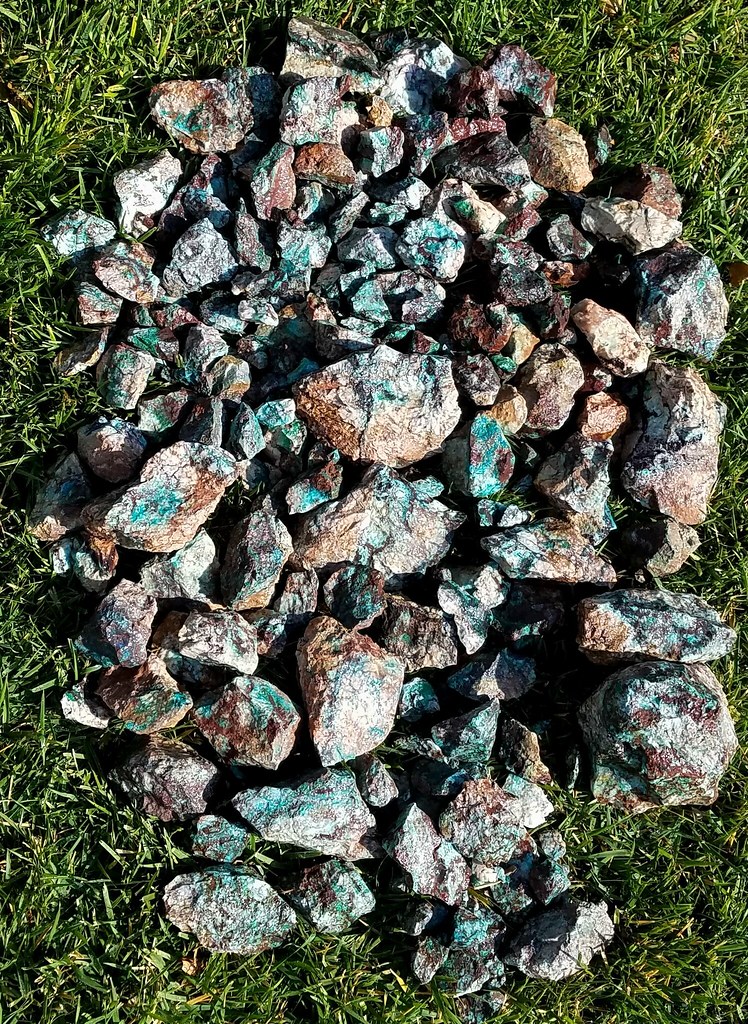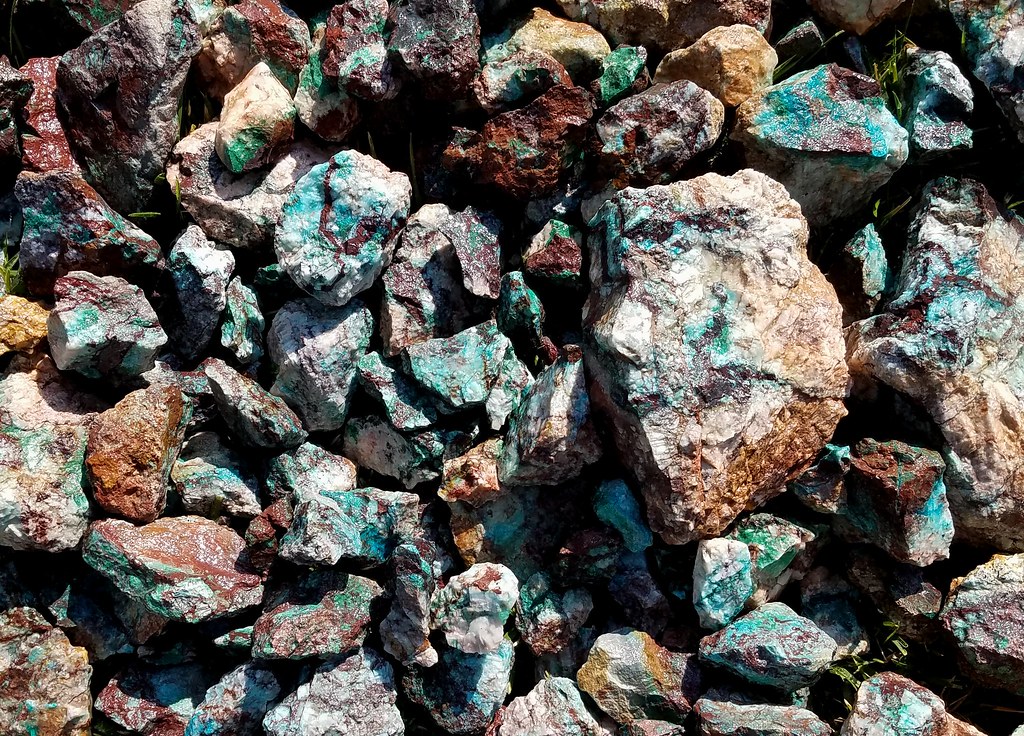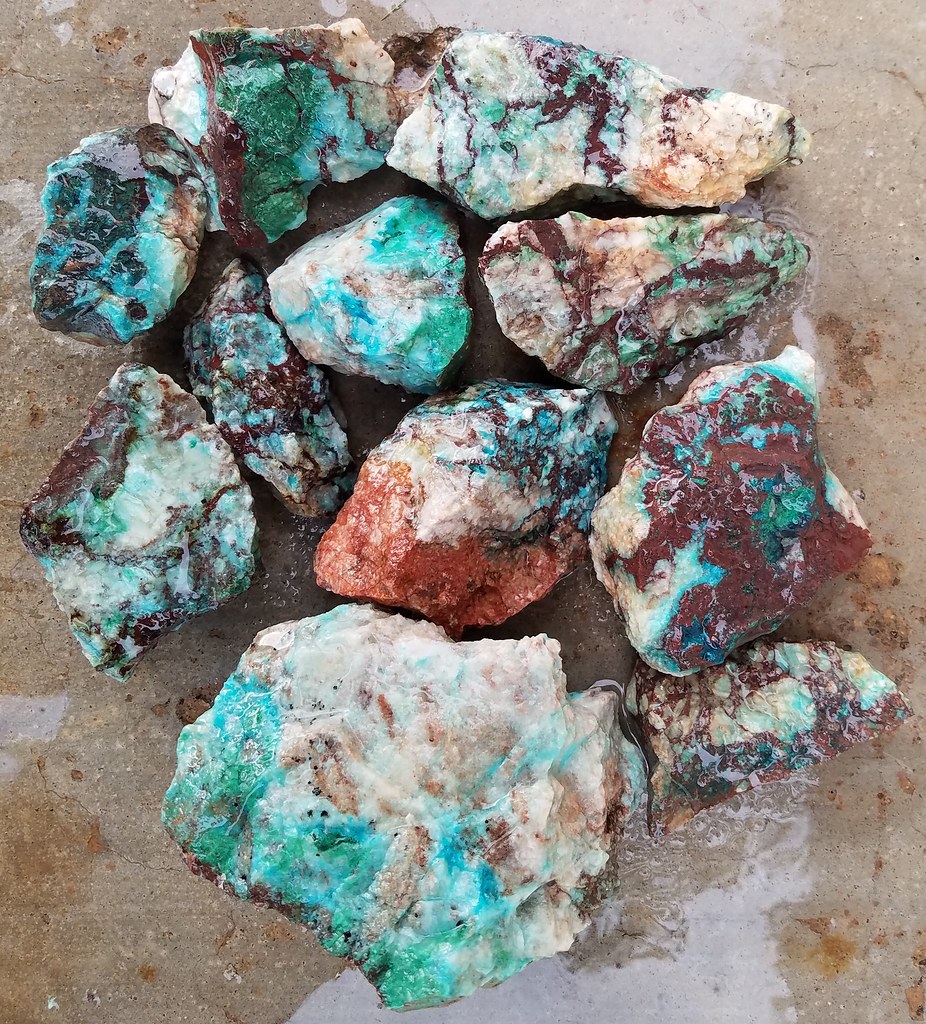|
|
Post by vegasjames on Dec 6, 2018 5:51:46 GMT -5
|
|
|
|
Post by hummingbirdstones on Dec 6, 2018 8:58:51 GMT -5
Wow!  |
|
|
|
Post by miket on Dec 6, 2018 10:45:38 GMT -5
|
|
|
|
Post by MsAli on Dec 6, 2018 10:51:53 GMT -5
Beautiful!
|
|
fireforged
starting to spend too much on rocks
 
Member since December 2015
Posts: 216 
|
Post by fireforged on Dec 6, 2018 13:19:51 GMT -5
Is that all hard and will it take a shine? looks very nice to me.
|
|
|
|
Post by drocknut on Dec 6, 2018 13:41:51 GMT -5
Nice for sure
|
|
|
|
Post by aDave on Dec 6, 2018 15:10:38 GMT -5
Great haul! Nicely done.
|
|
|
|
Post by vegasjames on Dec 6, 2018 17:36:42 GMT -5
Is that all hard and will it take a shine? looks very nice to me. Yes, I posted some pics of cabs in another post yesterday. This is mainly what I cab. I really enjoy working with the material. Hardness does vary a little as the matrix is mainly dolomite and calcite with varying amounts of quartz. If the piece does not shine really well on its own buffing it with Zam works. |
|
fireforged
starting to spend too much on rocks
 
Member since December 2015
Posts: 216 
|
Post by fireforged on Dec 6, 2018 18:14:07 GMT -5
I checked out those cabs and they are fabulous. I can see why you like working with the material. Some of it looks like it may have varying hardnesses and maybe a tendency to chip and pit. Do you have to stabilize? I wish I could go out and pick up material like this. Totally green with envy.
|
|
|
|
Post by vegasjames on Dec 6, 2018 18:59:08 GMT -5
I checked out those cabs and they are fabulous. I can see why you like working with the material. Some of it looks like it may have varying hardnesses and maybe a tendency to chip and pit. Do you have to stabilize? I wish I could go out and pick up material like this. Totally green with envy. Occasionally I will get one that cracks, which is to be expected especially considering it was blasted out of the mine. If they do I just repair them or reshape them as a free form. So does not bother me.
They can have pits as well. Since I free form most of my cabs I first grind away any really soft or thin areas then if possible the pits. If they are in the middle or too deep to grind out I fill them.
I have never stabilized any of the copper ore.
The only stones I stabilize are some of the softer Tiffany stone and I stabilized one piece of a slightly chalky turquoise as a stabilization experiment. I don't like stabilizing with epoxy so I have been doing experiments with things other than plastic. Usually sodium silicate more than anything.
|
|
RWA3006
Cave Dweller 
Member since March 2009
Posts: 4,620 
|
Post by RWA3006 on Dec 6, 2018 21:01:03 GMT -5
What a nice haul! That will help keep you busy this winter.
|
|
|
|
Post by fernwood on Dec 7, 2018 19:10:14 GMT -5
Oh my goodness. Now why didn't the copper/gold mine near where I used to live have tailings like that?
Simply beautiful.
|
|
zrock1
off to a rocking start

Member since January 2016
Posts: 24
|
Post by zrock1 on Dec 14, 2018 22:23:45 GMT -5
My little one likes tumbling the rocks she finds from old mines... especially the stuff loaded with fools gold... after it's done it comes out with a cool gold shine to it
|
|
|
|
Post by sophia13 on Dec 16, 2018 2:47:41 GMT -5
Great stuff.....just so cool to see what is out there.  |
|
|
|
Post by victor1941 on Dec 16, 2018 19:26:47 GMT -5
James, what is your method for stabilizing Tiffany stone with cracks that is to be used for display?
|
|
|
|
Post by vegasjames on Dec 16, 2018 21:06:44 GMT -5
James, what is your method for stabilizing Tiffany stone with cracks that is to be used for display? I don't stabilize the Tiffany stone for display pieces because the stabilization process I primarily use leaves a white crust that has to be polished off. So I only stabilize softer pieces that I have already slabbed to harden them up for cabbing so the crust gets removed during cabbing.
If you wish to leave the rough look for display then I would go with making a concentrated solution of oxalic acid and give the piece a soak for 5-10 minutes. The oxalic acid will react with the calcium in the Tiffany stone (calcite, dolomite) forming calcium oxalate crystals that can help hold the stone together. I have used this to harden the calcites in the stone and it seems to work pretty good for when I go to cab the material. The Nevada material tends to have honey calcite and occasionally green calcite mixed in with the white calcite and dolomite. Since these tend to be soft I use a couple of methods to harden the calcite including the oxalic acid. |
|
|
|
Post by stephan on Dec 17, 2018 0:36:26 GMT -5
I checked out those cabs and they are fabulous. I can see why you like working with the material. Some of it looks like it may have varying hardnesses and maybe a tendency to chip and pit. Do you have to stabilize? I wish I could go out and pick up material like this. Totally green with envy. Occasionally I will get one that cracks, which is to be expected especially considering it was blasted out of the mine. If they do I just repair them or reshape them as a free form. So does not bother me.
They can have pits as well. Since I free form most of my cabs I first grind away any really soft or thin areas then if possible the pits. If they are in the middle or too deep to grind out I fill them.
I have never stabilized any of the copper ore.
The only stones I stabilize are some of the softer Tiffany stone and I stabilized one piece of a slightly chalky turquoise as a stabilization experiment. I don't like stabilizing with epoxy so I have been doing experiments with things other than plastic. Usually sodium silicate more than anything.
I don't like stabilizing either. When I've done it (usually on excessively crumbly Dino Bone), I've used PaleoBond (a heavy duty cyanoacrylate that comes in various viscosities, depending on how much penetration you need). Results are mixed. |
|



























